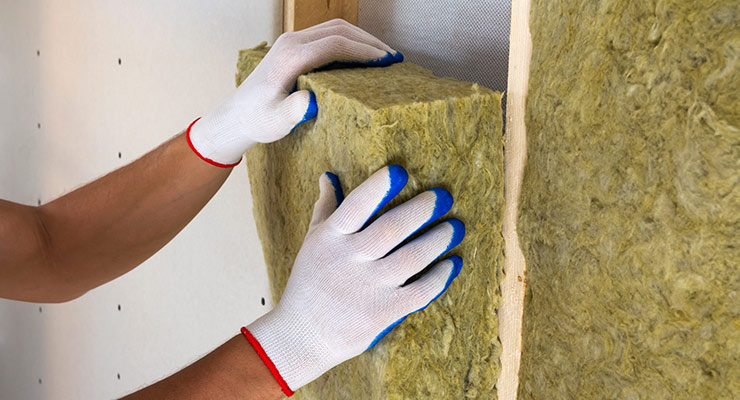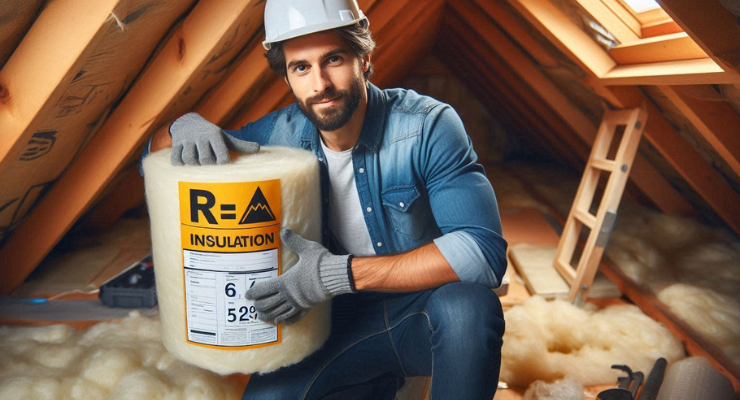Fast read
Home insulation is crucial for maintaining a comfortable temperature year-round and reducing energy bills. With increased comfort, savings, and sound dampening, insulation offers numerous benefits while lowering your carbon footprint. The R-value, measuring insulation's ability to resist heat flow, determines its effectiveness. A higher R-value means better insulation.
Consider both the down R-value, for heat resistance in summer, and the up R-value, for heat retention in winter. Overall, insulation is essential for energy efficiency and comfort in your home, making it a standard in new constructions.
What R-Rating Insulation Do I Need For My Home?
In the quest for a comfortable home that doesn’t break the bank, one solution stands out: Insulation. It’s not just about keeping warm in winter or cool in summer; it’s about creating a space where temperature and energy costs are manageable year-round. Let’s dive into the world of home insulation, exploring its benefits, R-ratings of insulation, and how it can transform your living experience.
Understanding Home Insulation R-Rating Products
Imagine insulation as a cosy blanket wrapped around your home, keeping it comfortable no matter the season. Typically installed in ceilings, floors, and external walls, insulation acts as a barrier against heat transfer. By preventing heat from escaping in winter and infiltrating in summer, it helps maintain a consistent indoor temperature.
The Benefits of Home Insulation
1. Increased Comfort
Insulation creates a Goldilocks environment – not too hot, not too cold, but just right. Say goodbye to drafts and temperature fluctuations, and hello to a consistently comfortable home.
2. Savings
Think of insulation as your home’s energy-saving superhero. By keeping the cool or warm air inside, it lightens the load on your HVAC system, resulting in lower energy bills and more money in your pocket.
3. Sound Dampening
Insulation isn’t just about temperature control; it’s also a natural soundproofing agent. Enjoy a quieter home environment with certain types of insulation that help absorb and reduce noise.
4. Reduction in Carbon Footprint
Less energy consumption equals a smaller environmental impact. By using less power to heat or cool your home, you’re doing your part to reduce greenhouse gas emissions. Plus, many insulation materials are recyclable, further minimizing environmental harm.

Understanding R-Rating Insulation
R-Values are the MVPs of insulation, measuring its ability to resist heat flow. The higher the R-value, the better the insulation performs. Three main types of R-Values to know are:
1. Down R-Rating (Summer R-Value)
This measures insulation’s resistance to heat entering your home. In hot climates, you want a high Down R-value to keep the heat out and maintain a cool indoor temperature.
2. Up R-Rating (Winter R-Value)
Also known as Winter R-Value, this measures insulation’s resistance to heat flowing out of your home. In cold climates, a high Up R-Value helps trap heat indoors, keeping you warm and cosy during winter months.
3. Total R-Rating of Insulation
The sum of Down and Up R-values represents insulation’s overall effectiveness in regulating indoor temperature year-round.
Choosing the Right Insulation
With a variety of insulation materials and R-Values available, selecting the right one for your home can seem daunting. Here are some popular options to consider:
1. Fibreglass Insulation
Budget-friendly and versatile, fibreglass insulation comes in batts, rolls, or loose-fill insulation. It’s non-flammable and offers a decent R-rating of insulation for most climates.
2. Spray Foam Insulation
This expanding foam fills every nook and cranny, creating an airtight seal for maximum energy efficiency. While more expensive, spray foam insulation boasts high R-ratings and superior moisture resistance.
3. Cellulose Insulation
Made from recycled paper or cardboard, cellulose insulation is eco-friendly and effective at reducing both heat transfer and noise. It’s a great choice for those prioritizing sustainability.
4. Reflective Insulation
Reflective barriers, often made from aluminium foil, are great for keeping your home cooler in the summer. They work by reflecting radiant heat away from your home.
While reflective barriers alone aren’t enough to fully insulate your home, they work well when combined with other types of insulation. By using reflective barriers along with materials like fibreglass or foam, you can boost your home’s overall insulation. This combination helps to keep your home comfortable and energy-efficient, saving you money on cooling costs in the summer and making your home more pleasant to live in year-round.
Installation and Maintenance Tips
Proper installation is key to maximizing insulation’s benefits. Whether you’re hiring a professional or going the DIY route, follow these tips for success:
- Seal any air leaks before installing insulation to prevent energy loss.
- Ensure proper ventilation to prevent moisture buildup, which can lead to mould and mildew.
- Regularly inspect insulation for signs of damage or deterioration, such as sagging or discolouration, and replace as needed.
Conclusion
Home insulation is a smart investment that keeps you comfortable and saves money. By learning about different types of insulation and how to install them, you can keep your home cosy and energy-efficient all year. Fibreglass insulation is cheap and easy to install, foam board is great for walls and floors, spray foam fills gaps well, cellulose is eco-friendly, and mineral wool resists fire and noise.
Proper insulation lowers energy bills, reduces environmental impact, and improves your overall well-being. Embrace insulation to make your home comfortable and efficient.
